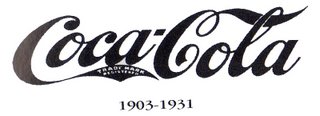Introduction
Noodles can be regarded as the second staple after rice in Asian countries. The great thing about noodles is that they can be prepared in various combinations; with sauces, in soup, fried, with all kinds of meat, seafood and vegetables. When compared to rice, noodle meals are cheaper and more convenient. A great deal of time can be saved in the preparing, consuming and dish washing processes. Therefore, despite it ancient origins, it is highly suited to the fast beat of modern society.
| kad kahwin ||| Paper Bag ||| Breeders Cup Betting - Bet on Breeders Cup 2009 at Sportsbook.com |
Hong Kong is well known for its variety of cuisines and delicacies. Noodles are still very popular and serve as a daily meal for many, especially the working class. The noodle shop nowadays originated from the Dai Pai Dong noodle stall in the 1960's. At that time, the economy in Hong Kong was based very much on manufacturing industry. The factory workers either brought their lunch box or went to the Dai Pai Dong for a bowl of wonton noodle for their lunch. There were also many street hawkers who earned a living by using a cart to sell noodles with assorted toppings to serve the needs of pedestrians. In the early 1970's, immigration of people from different regions of the Mainland China encouraged the emergence of different varieties of noodle, soup and ingredients. These types of noodle shops were welcomed by the Hong Kong public.
The popularity of Japanese culture in the 80's bring Japanese noodles to HK
Hong Kong has always been heavily influenced by Japanese culture. It starts at a young age in Hong Kong where children are deluged with loads of Japanese cartoons and dramas. They become infatuated with characters such as Hello Kitty, Pokemon, Ultraman, Gozilla and Dragonball Z. Generally, all things Japanese are considered to be fashionable and sophisticated whereas Chinese culture is considered to be boring and staid. From the 1980's onward, many Japanese Department Stores set up operations in Hong Kong. They flourished at the expense of local department stores that were considered to be rather bland. They brought in the concept of food courts located inside a department store, which shoppers found convenient. Japanese food like sushi and noodles were the major fast food introduced in the food courts. Due to curiosity and adventurous nature of Hong Kong people towards different cultures and foods, it did not take long before Japanese noodles like udon, ramen, became well accepted in the Hong Kong marketplace.
Competitive Edge of Japanese over Chinese Noodle Shops
The traditional Chinese noodle stalls in Hong Kong has changed little over half a century. Like many traditional Chinese businesses, these were usually run by a family, (typically the father acts as the cook and master, the mother the cashier, and their children as waiters/ waitresses). Although the management of these stalls can be very flexible, they lack of control on the quality of food and customer service. Moreover, they do little to promote their shop image. The staff seldom wears uniform, and little attention is paid to food hygiene and the shop interior. Some stalls have pets strolling around and some don't even have air conditioning. Usually the menu is only in Chinese language, which is placed either under the greasy table glass top or pasted along the walls.
The target customers are usually people in their neighborhood and the business relied mainly on the low price strategies, or by word of mouth. The way in which the noodle is cooked is the crucial factor on getting return business. However, since the current generations of young people nowadays are able to receive higher education, they will not be eager to inherit their father's business. Given that running a noodle stall is not considered as a particular prestigious and well-paid job. Therefore when the master retires, he must pass on his technique to someone outside the family. It is a customary practice though for Chinese chefs not to pass on everything. Therefore, there is bound to be changes to the quality of the food once the business has changed hands.
The Japanese noodle shops on the other hand are better organized. In the shop front, there is usually a display window showing wax models of different set meals. The wax models can imitate the food so successfully that it provides a mouth-watering image to the passerby. When one walks into the shop, he will be greeted politely by trained waitresses either wearing apron or some sort of uniform. The shop interior is carefully design to reflect Japanese culture and is always clean and hygienic. The menu is supplemented by some very attractive photographs. So that customer can be assured what they order will match their expectations, even if they cannot read the menu correctly.
As the living standard of people in Hong Kong improves, their requirement on food is no longer just to fill the stomach. The target customers of Japanese noodles are usually the young generation and office workers. They are less price conscious and are willing to pay more for better food quality, service and eating environment. Although a bowl of noodle sold in a Japanese noodle shop could be at least three times higher than those sold in a Chinese noodle stall, many people still think that it is worth the money.
Besides the overall image of a Japanese noodle shop, the consistency of food quality is the critical success factor for the Japanese noodles in penetrating the Hong Kong market. The Japanese have a fancy on noodles and have a serious attitude on trying to make the best noodle. This can be reflected in the film called 'Tampopo'. This is a comedy directed by Juzo Itami in 1986/7. The story is mainly on a Japanese noodle shopkeeper persistently pursuing ways to improve her noodle making technique. With the help of some amateur noodle gourmets, she had to first undergo a vigorous physical training program. Then they spied on local ramen shops in order to steal secret recipes from other chefs, and comparing the quality of service and decor. She slowly worked towards gaining confidence in herself, finding the correct balance in her food, and was finally able to make great noodles.
Although the story was a bit outrageous and the characters are exaggerated in order to be humorous.
Instant noodles are eaten around the world - 43.7 billion servings annually. The cup noodle is particularly suited to the rapid pace of modern living. The dried noodle and food base is packed into a cup along with a fork. All the customer needs to do is to pour hot water into the cup and wait for a few minutes. After consuming the meal, the whole receptacle is then discarded. The whole package is very light and can thus be easily carried to work and outdoor activities such as hiking, camping, and traveling on a plane, ferry, coach or train. Instant noodles are manufactured by machine so that the shape, size, and quality are the same each time. That way, the consumer can be assured of consistency in the product purchased.
Instant noodles have a long shelf life, which makes them eminently suitable for use in emergencies such as during a typhoon. Their ease of storage meant that they could be stocked easily by a variety of establishments. Instant noodles can now be bought in supermarket, convenient stores, gas stations, and vending machine. Quite often, hot water facilities are available on-site so that the customer can cook the product immediately after purchase. Instant noodles have become a favorite for many college student, bachelors and people who work overtime a lot. It also provides a good alternative for busy young married couples that would have gone out to eat otherwise. It also serves as an easy to prepare snack for many households. Therefore instant noodles have made a large impact on the food culture.
After the success of "Nissin" noodles, copycat makers appeared one after another. Even industry giants based in Western countries such as Lipton and Campbell's began to experiment with ramen-like products. Nowadays, there are hundreds of brands of instant noodles for selection in supermarkets around the world. Under such a fierce competition, each manufacturer would have to promote their products strategically.
According to a survey conducted by "Pot Noodle" (part of the Unilever group in the UK), around 50 per cent of purchases are impulse buys. Therefore, in order to stand out from the rest, attractive packaging is essential in order to draw the attention of potential buyers. Exotic images are associated with particular flavors, in order to promote the idea that eating instant noodles is fashionable. The Pot Noodle brand takes the whole idea further by trying to promote a cult image for its products (http://potnoodle.com)
Price is often not the crucial factor in the purchasing decision of customers. The price of instant noodles is usually much cheaper than a meal purchased in a fast food outlet such as McDonald抯 and Kentucky抯. The purchasing decision mainly rests of the food quality i.e. type of noodle and seasoning.













